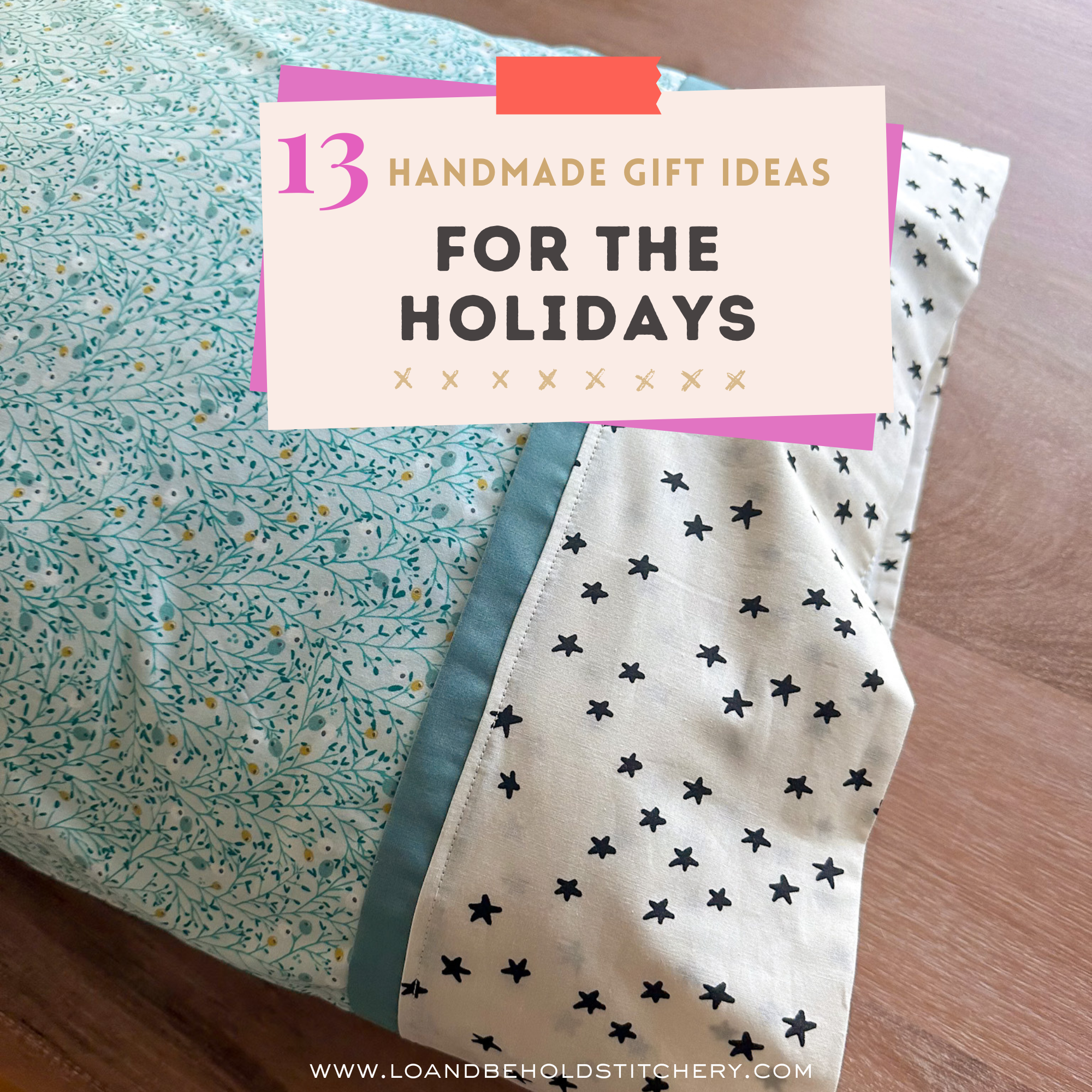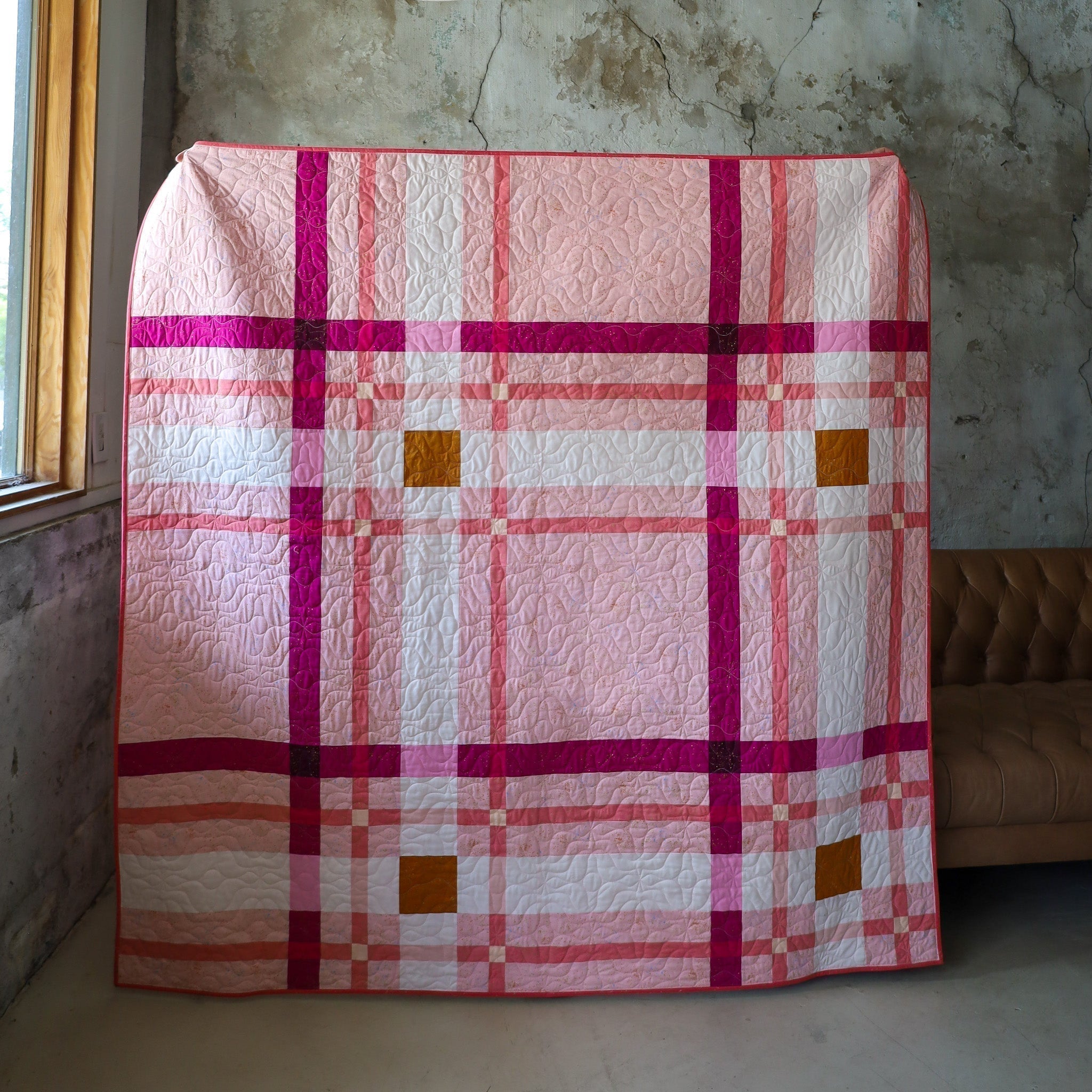7 Fabric Types for Quilting — & How to Use Them Together Successfully

Discover how different fabrics affect your quilt's drape, look, and cuddle factor.
written by: Rebecca Bratburd
Have you ever been stopped in your tracks when you saw beautiful, shifting colors within the fabrics of a quilt? Or some unexpected but charming texture that you don’t see in standard quilting cotton?
The fabric world offers endless possibilities and continues expanding with new options which only add to the depth and texture you can incorporate into a quilt. This guide provides a starting point for customizing your quilt from the outside in. The fabric substrates you choose shape your quilt's personality, influencing its weight, feel, and visual appeal.

First, what is a substrate? Substrate simply refers to the base material or fabric type. This can refer to any type of material: quilting cotton to linen to wovens to specialty fabrics.
You may have noticed some quilters gravitating toward different fabric substrates, like yarn-dyed wovens, lawn cottons, Robert Kaufman Chambrays, or Art Gallery Fabrics' linen blends. If you're looking for a gentle introduction to experimenting with different materials, this is your go-to guide to quilting fabrics. While alternative fabrics need extra consideration when cutting and piecing, they reward you with unique textures and subtle color variations that make handmade quilts so special.

Even more budget conscious, our Summer Scrap Bash, which kicked off on June 26 (there’s still time to join!), offers the perfect opportunity to experiment with different substrates. This free seven-week sew along centers around using your scrap stash, making it ideal for trying out different fabric types from your stash.
Let's start with the vocabulary quilters and garment sewists use to describe different fabric types. Then, we'll discuss how to achieve beautiful results when incorporating one or more substrates into your next quilting masterpiece!

Fabric Substrate Terminology
Drape
Drape describes how fabrics hang and flow. A low-drape fabric appears more voluminous or stiffer, resulting in a more structured feel. Alternatively, a high-drape fabric looks more fluid and softer. Think your favorite lived-in tee shirt versus your stiffest button-up shirt.
Hand
When someone refers to a fabric’s “hand,” they’re describing how it feels to the touch. This term encompasses the tactile qualities of fabric, including softness or roughness, weight or lightness, and drape (how fluid or stiff the material feels).
Shrinkage
If you’ve decided to stick to one fabric substrate in your next quilt top, you won’t have to worry about shrinkage. However, when mixing different materials in your quilt top or pairing them with contrasting backings like flannel, consider prewashing your fabrics.
Fabric Substrates, or Fabric Types
Quilting Cotton
When used in a quilt, the possibilities for colors and patterns are endless with quilting cotton. It’s lightweight enough to move with ease through your sewing machine, yet durable enough to stand up to repeated use and wash. Shrinkage is minimal at 1-2%. Unwashed fabric offers firmness that makes piecing easier, though we make exceptions and sometimes prewash fabrics with high contrasting dyes (like blues and reds), upcycled, or secondhand fabrics. This straightforward cotton has proven so reliable, it’s earned the name quilting cotton.

Lawn
Like quilting cotton, lawn is lightweight cotton that’s easy to work with, but it feels lighter. It has a silk-like feel and generally feels a bit cooler and thinner than quilting cotton. Shrinkage is negligible. Liberty Fabrics manufactures lawn (specifically Tana Lawn®) and it’s popular with quilters and garment sewists alike because of the array of bright, cheerful prints offered.

Linen
Linen is a traditional woven fabric and natural fiber made from flax. Just as linen creates comfortable, breathable summer garments, it brings that same relaxed feel to quilts. Shrinkage can vary based on brand, but hand washing linen fabrics before use can help minimize variations in shrinkage between different substrates mixed with linen. It’s generally considered more delicate than quilting cotton and lawn.

Linen blends
Many "linen" fabrics today blend flax with cotton, rayon, or other materials. Art Gallery Fabrics’ Linen Blends and Robert Kaufmann’s Essex Linens are made with 55% cotton and 45% linen, making them perfectly soft and textured while maintaining good structure. It holds up better over time compared to pure linen, and because it’s blended with cotton, it shrinks similarly to a quilting cotton.

Batiks
Batiks are a specialty fabric made of 100% cotton that goes through a different kind of dying process compared to quilting cotton, resulting in a watercolor effect. Batiks can be used in place of, or alongside of, quilting cotton. Generally, batiks have a tighter weave, a more lightweight feel, and the potential for color bleeding, so special care may be required if using them in a quilt. Shrinkage is minimal.
Yarn-dyed Wovens
While all of the fabrics mentioned here are wovens (as opposed to knits, which are also made from cotton, but constructed to be stretchy), quilters often use “wovens” to describe chambray and yarn-dyed fabrics made from cotton, bamboo, or fabric blends. These materials often display more visible texture than standard quilting cotton. Like linen, consider pre-washing.


Flannel
Flannel is a soft, warm fabric that’s heavier than the other types of fabrics we’ve mentioned so far. Usually, it’s used as a quilt backing, or potentially as a whole cloth quilt. Typically, flannel is 100% cotton. It handles and wears durably over time, though we wouldn’t recommend it as use for binding (speaking from experience!). You can expect shrinkage to be slightly higher than quilting cotton.

Specialty Fabrics
- Double gauze: Perfect for whole cloth quilts or quilt backings
- Minky: Excellent choices for quilt backings
- Rayon and knits: Better suited for garment sewing — think tee shirts made from jersey
- Canvas: Ideal for bags, upholstery, and home decor projects
How to Successfully Combine Fabrics in Quilts
Depending on who you ask, no fabric substrates are truly off limits, and mixing and matching fabrics can add character to your quilt. However, stretchy materials like knits, non-cotton denims, and toweling can be particularly challenging to guide through your sewing machine.
The secret to successful fabric mixing lies in choosing compatible weights. Pairing extremes like thick corduroy with delicate silk creates technical difficulties that can frustrate even experienced quilters. Likewise, double gauze would be too light to combine with heavy canvas.
Combining fabrics in one quilt isn’t new! Victorian-era "crazy quilts" celebrated fabric variety, combining silks, velvets, and cottons in artistic arrangements typically displayed as wall art.
Mixing substrates in one quilt is absolutely fine. Many fabric sellers actually offer bundles of mixed substrates that, when used together, create a soft, handmade, beautifully textured aesthetic. The key is combining similar weights with varying textures, such as quilting cotton with chambray, or chambray with linen blends.

How to Choose your Fabric Type
With seemingly endless fabric options and new collections landing all the time, take comfort in knowing that there are really no wrong decisions. Different substrates offer a variety of weights, textures, and appearances, giving you fresh ways to personalize your projects.
Let’s start by clarifying the intentions for your quilt.
Set an intention (for your quilt)
Just like selecting batting or thread, fabric types serve different purposes. This is where your intention matters. Where will your beautiful finished quilt live? Who will use it and how? Is it destined for a newborn baby, or will it accompany picnics, camping trips, or stargazing adventures? How will it be quilted? Is it bound for a quilt show?
Think about whom the quilt is for. For gifts to new parents or babies, you'll want to understand care requirements. Fabrics like double gauze feel perfect for a child's early days but may not offer long-term durability. Meanwhile, quilting cotton or quality wovens provide lasting strength while still delivering softness and comfort.
If your quilt is headed for an exhibition like QuiltCon or a local show, quilting cotton will help your work of art keep its shape.
Name your price
Depending on your project, you may have a budget in mind. For fundraisers, charity quilts, or less personal projects, cost control might be important. Quilting cotton tends to cost less than wovens and linens while still producing stunning results. If you want to mix fabrics but are working on a budget, consider using a different substrate as an accent fabric. This will give you added texture without breaking the bank.
Pick your texture and palette
Quilters are naturally tactile and find joy in fabric textures! Explore your local quilt shops to feel the differences between quilting cottons and wovens. Notice how light plays across varying fabric types. What appeals most to your eye? Do you prefer clean lines and pure colors, or does a lived-in, artisanal aesthetic draw you in? Depending on the project, you might embrace both options.

Watch out for fraying
Some substrates fray more readily when fibers separate from the weave, potentially compromising seam allowances—failed seams bring no joy to anyone. Wovens, linens, and blends tend to fray more than high-quality quilting cotton.

This doesn’t mean that these fabrics are subpar. It only requires a little bit more care. Using a shorter stitch length, like 1.8mm-2.0mm helps when mixing fabrics or using a different substrate. We recommend piecing with a shorter stitch length to avoid popped seams.
We also recommend handling any non-quilting cotton with care between quilting steps. Consider identifying where you want to use these fabrics in your quilt top before mixing and matching to avoid handling too frequently. If you decide to prewash your fabrics, consider using a mesh laundry bag or stay-stitching around the edges prior to washing.
Quilting cotton tends to resist fraying well, but if you start to notice your fabric fraying after it’s been cut, try to handle it less frequently.

Stitching it all Together
Learning about different fabric substrates felt overwhelming to us when we first began our quilting journeys. Exploration, particularly on smaller projects or as accents, will put your mind to ease as you become familiar with them. Just know that there are no wrong choices when it comes to quilting, just smarter choices. Remembering to avoid stretchy fabrics or over-handling your fabrics during the piecing stage will help you succeed beautifully.
After completing a few projects, many quilters describe fabric selection as their favorite step. Whether you’re creating a show quilt, cuddle quilt, or any quilted project, fabric type influences the final result more than any other material choice.
As you continue quilting, take note of how different fabric types feel and perform. The more you experiment, the more you’ll understand what works for you. Over time, you’ll discover your favorite go-to fabrics and how they enhance your work.

Ready to start experimenting? Sign up for our seven-week Summer Scrap Bash, and let the fun begin. Happy quilting!






